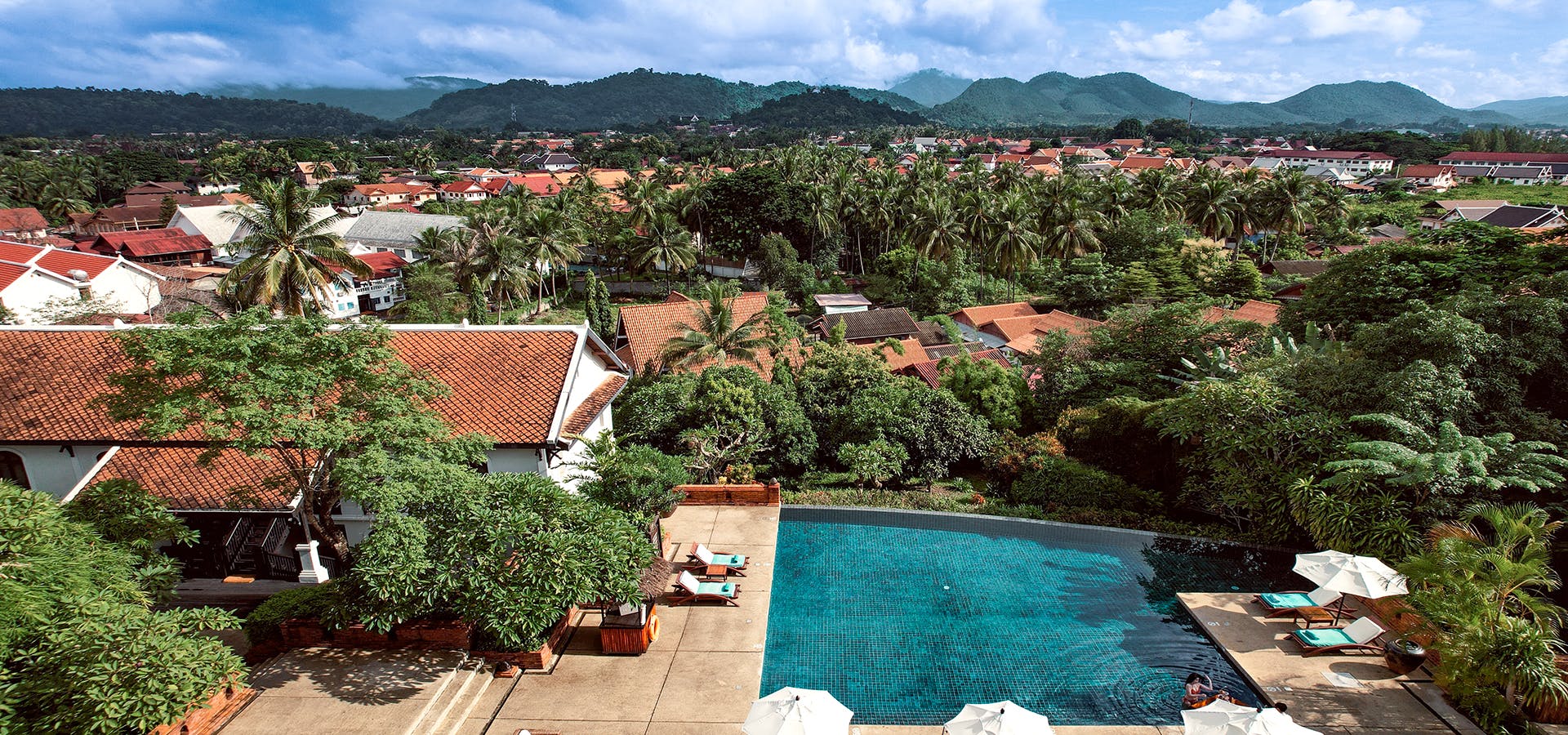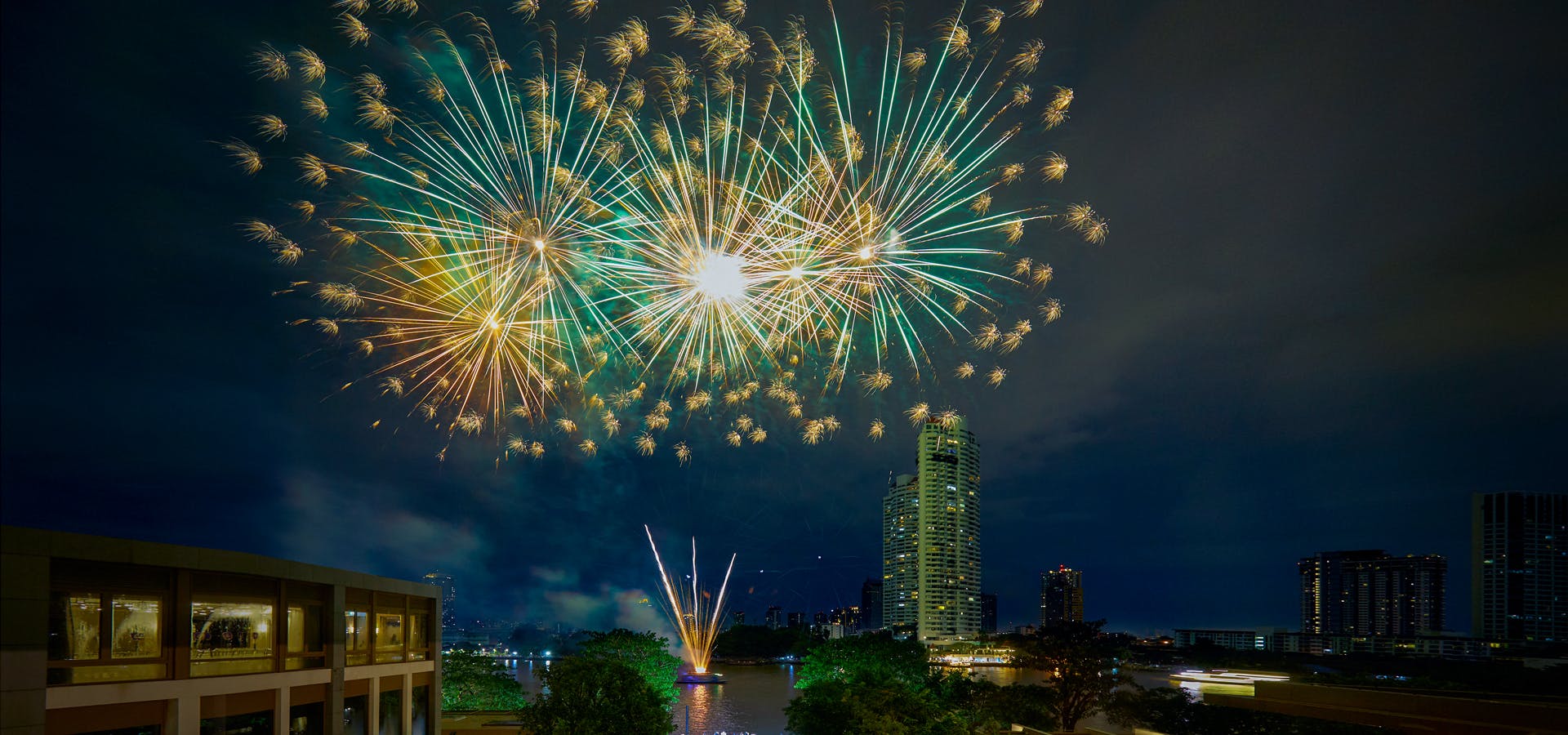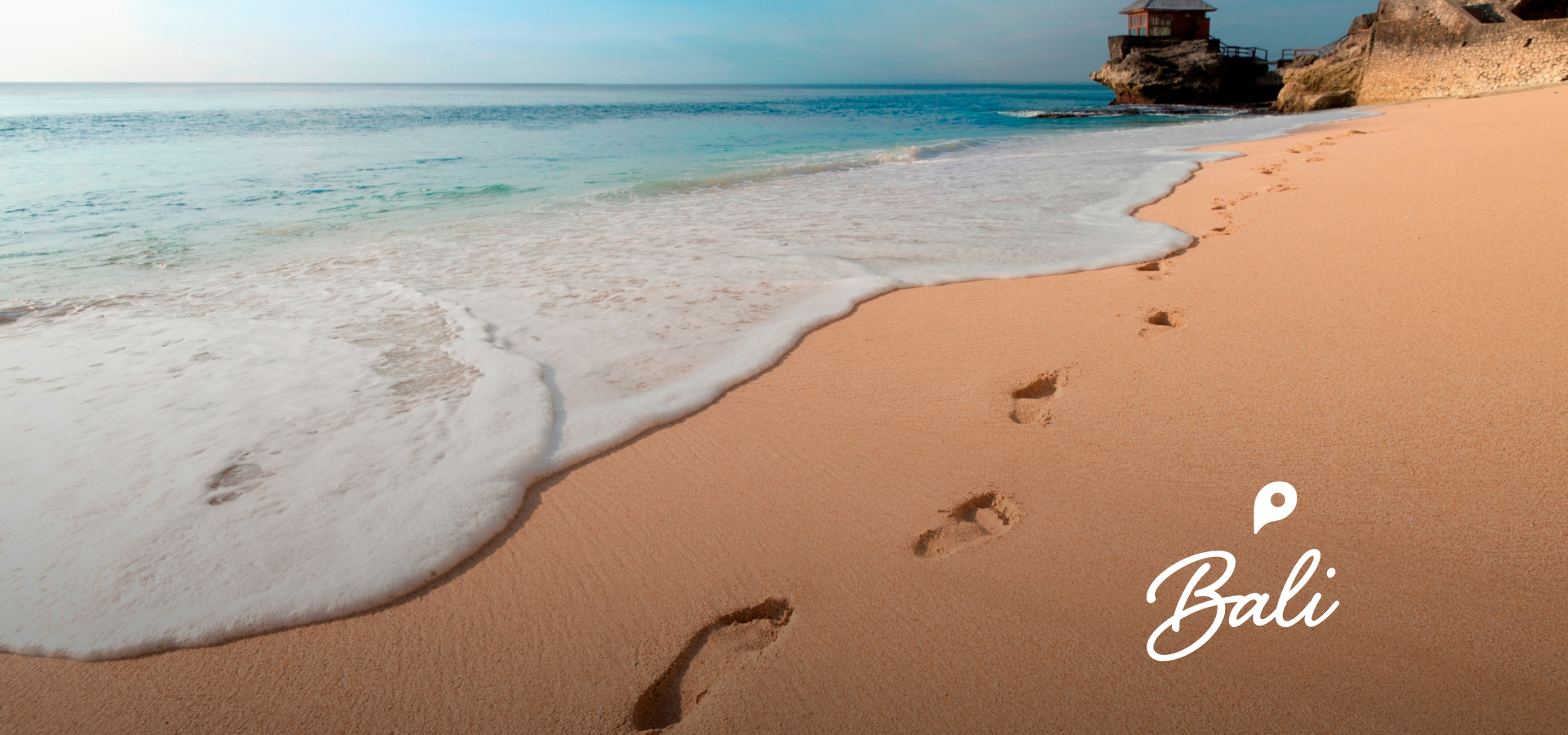Few places in the world were as devastated by the pandemic as Luang Prabang, once the royal capital of Laos. This UNESCO World Heritage site also just happens to be one of the world’s most beautiful, which only adds to the tragedy. The small city is almost completely dependent on tourism. All the hotels shut down, and many restaurants and shops will never open again. Some local restaurateurs opened a lunch canteen to feed people.
But this October, the luxury hotels are once throwing their doors open. That’s the start of the dry season, when the nights are cool enough for sweaters, but the days are warm and sunny, with humidity far lower than usual.

So why Luang Prabang? It was the capital of the empire Lan Xang (1353-1707), and it has always been the heart of Lao Buddhism. To this day, a long, silent procession of monks walks the streets at dawn to receive alms of rice. Luang Prabang is surrounded by tropical forest and serrate mountains, and just flying in is unforgettable. The heart of the small city is a peninsula formed by the junction of the Mekong and Nam Khan rivers. Of more than 30 stunning temples, the crown jewel is the 16th-century Wat Xieng Thong complex. Architecture consists of Lao wood houses, shophouses, and French colonial villas (the French arrived in 1893). Opposite the Royal Palace is Mt. Phousi, more than 350 steps to a gold-leafed domed shrine—and views. Many hotels provide bicycles, and when you aren’t enjoying the temples, the dramatic nearby waterfalls, or a boat trip upriver to the Pak Ou caves—filled with hundreds of Buddha images—there’s nothing like a stroll along one of the rivers for a lazy cup of espresso.

And of course, this is the land of silk. Be sure to visit the Ock Pop Tok (East Meets West) shops and its weaving studio. Each object bears a tag with the name of its weaver. All the high-end hotel boutiques sell Hoi-Sang Unique Lao Jewelry handcrafted in Laos and inspired by antique pieces, designed by part-Lao former ballerina Suzette Schoebitz. For exquisite art objects, antique textiles and more, visit the Galerie Asiama. And we hear that the Icon Klub bar, one of those spots where everyone meets, will reopen soon.
We say: Go soon.
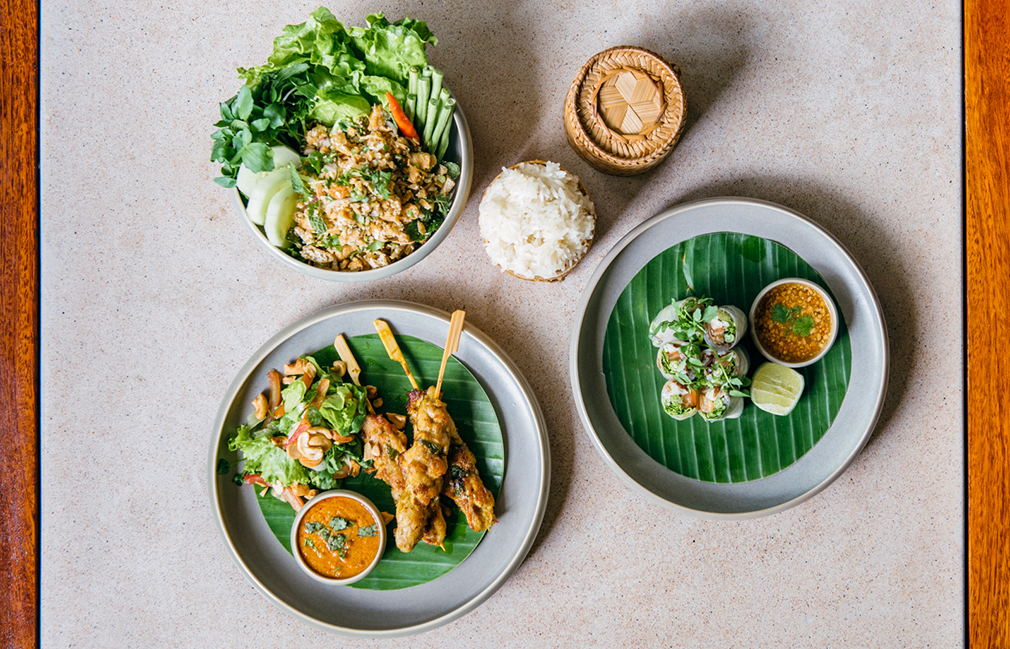
Amantaka
Once a colonial-era hospital, Amantaka maintains the white buildings’ open, light-filled, orthogonal structures capped in peaked roofs, with gray shutters closed at night, soaring ceilings and cool tiled floors. The suites have an elegant, intentional simplicity—each with an Aman taka private courtyard, most with their own pools, although there’s an immense central pool. Service is impeccable but at a calm, relaxed tempo. Breakfast, lunch and dinner are served both indoors and outside around the pool; by day under creamy umbrellas, at night, romantically candlelit, and in winter, warmed by braziers. The gift shop is probably the best in town, and the spa is luxurious, with four treatment rooms containing changing rooms and Jacuzzis. The resort has its own lovely river boat. It’s just a pleasant stroll along the river to the center of town, or a short tuk-tuk ride (and Amantaka has its own gleaming tuk-tuk). There’s an overall aura of nonchalant privilege.
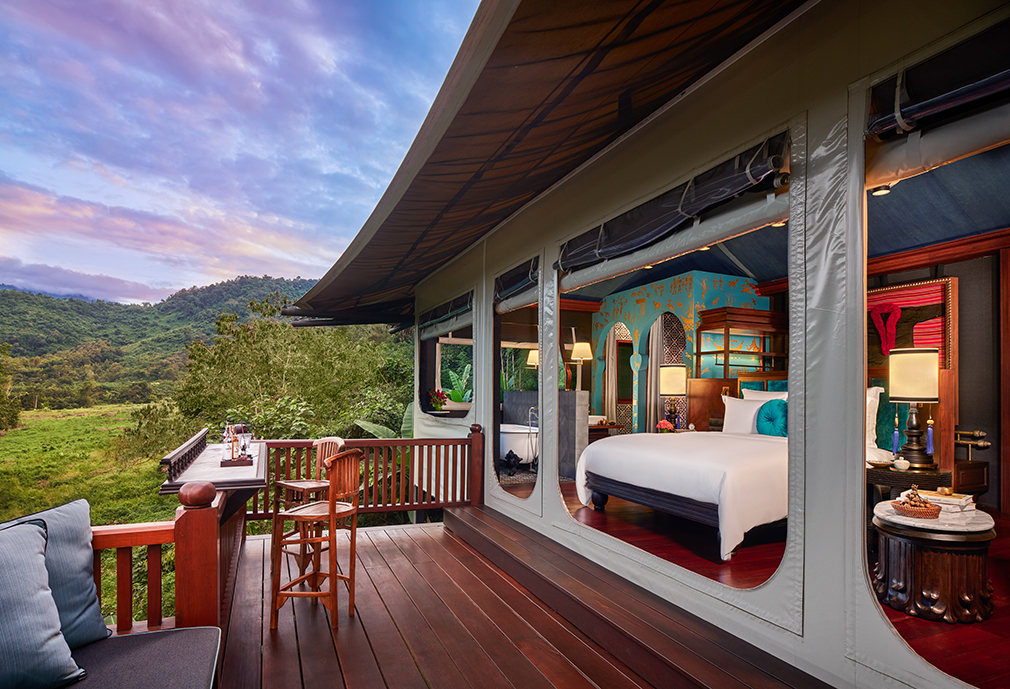
Rosewood Luang Prabang
When the Bill Bensley-designed Rosewood opened in 2018, it was hands-down the hottest stay in Luang Prabang, an extraordinary stay. Accommodations range from large hotel-style suites with balconies over a small river, to pool villas, to luxe hilltop tents with decks offering sweeping views across the hotel’s tropical forest landscape to the mountains. All the meals are served in the colonial-style main building, while the chic bar is actually a bridge over the river. At the three-tent spa I had a ceremonial massage by a shaman from a local village. My pool villa, #16, had stunning temple-style painted walls, a wood terrace with cabinets holding everything one might need, and a back courtyard where a wood tub was enclosed in walls painted in the red and gold of a shrine in the Xieng Thong complex. Know that except for the hotel-style rooms, reaching your villa requires some stamina (and steps), but the result is royal serenity.

La Residence Phou Vao
This Belmond hotel was once the only game in town, before Aman, then Rosewood, came along. Looking across the pool from the restaurant, the view across the green valley is the gold-leafed shrine atop Mt Phousi. Service is practiced and personal; check-in and you’re part of the family. La Residence has a lovely full-service spa beside a lily pond with a main building in traditional Lao dark wood and individual treatment cabins. It’s atop a steep hill a 10-minute tuk-tuk ride to town, with a tranquil air amid old-growth landscaping rich in flowering vines and bushes. At dusk, the candlelit tables beside the pool are about as romantic as you can get. Sign up for a baci ceremony here, beside a reproduction temple ruin.
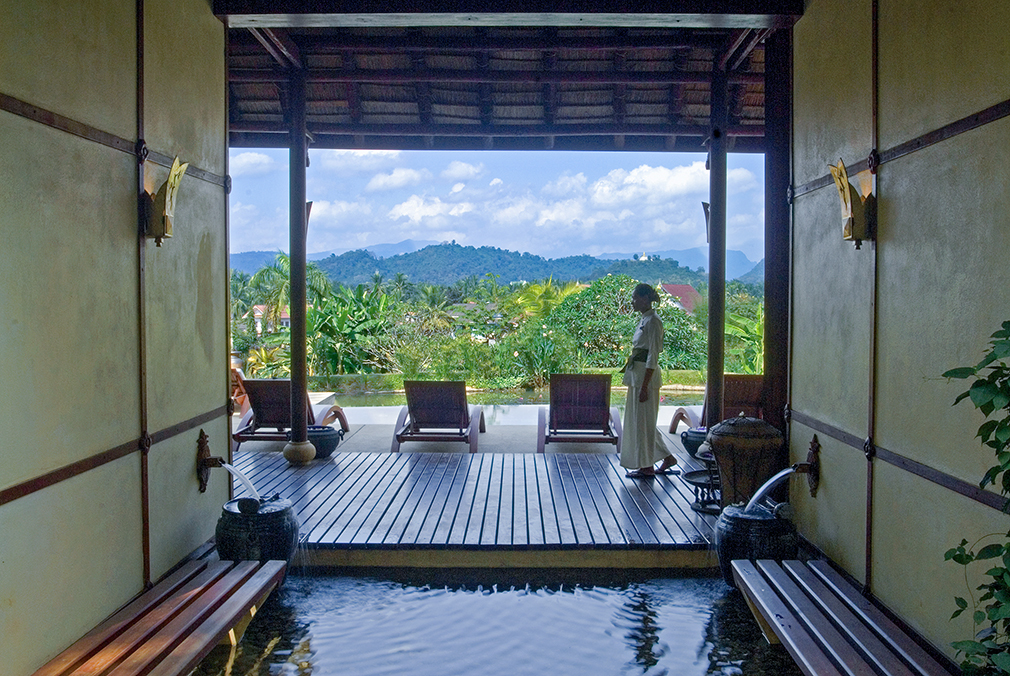
4-Stars and a New Luxury Resort
Oddly, it’s the 4-star hotels that have the prime riverfront sites. The Belle Rive offers rooms with Mekong views, complementary minibars, coffee makers, bicycles, an organic garden and purified water you can use to refill your travel bottles. Le Bel Air is a 66-room resort on the Nam Khan, with French Deco interiors, a river view restaurant, and a pool. The Mekong Riverview, opened in 2008 by a Swedish hotelier who’d fallen in love with Luang Prabang, and is a 24-room boutique next to Wat Xieng Thong, with Mekong views, balconies or terraces off every room, and a Lao-cuisine Viewpoint restaurant at the point where the rivers meet. A new 60-room resort will be opening in October, MyBanLao Luang Prabang, by Benny Kong Chong Jee, a Singaporean entrepreneur who’s lived in Laos for decades and runs one of the handiest information and reservation websites for would-be visitors, Discover Laos. The eco-friendly hotel occupies the former CIA building, uses only electric vehicles, and has a turtle sanctuary.





